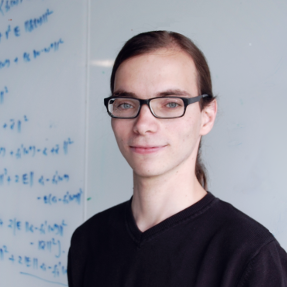Human Pose, Shape and Action
3D Pose from Images
2D Pose from Images
Beyond Motion Capture
Action and Behavior
Body Perception
Body Applications
Pose and Motion Priors
Clothing Models (2011-2015)
Reflectance Filtering
Learning on Manifolds
Markerless Animal Motion Capture
Multi-Camera Capture
2D Pose from Optical Flow
Body Perception
Neural Prosthetics and Decoding
Part-based Body Models
Intrinsic Depth
Lie Bodies
Layers, Time and Segmentation
Understanding Action Recognition (JHMDB)
Intrinsic Video
Intrinsic Images
Action Recognition with Tracking
Neural Control of Grasping
Flowing Puppets
Faces
Deformable Structures
Model-based Anthropometry
Modeling 3D Human Breathing
Optical flow in the LGN
FlowCap
Smooth Loops from Unconstrained Video
PCA Flow
Efficient and Scalable Inference
Motion Blur in Layers
Facade Segmentation
Smooth Metric Learning
Robust PCA
3D Recognition
Object Detection
Psychology

Much of the research in cognitive science and an increasing fraction of that in machine learning agree that truly intelligent behaviour requires causal representation of the world. A central research question is which behaviourally relevant input data support causal inference algorithms of human perception: what are the critical cues in complex, high-dimensional real-world data impinging on our sensory systems that our causal inference algorithms run upon?
Recent ML algorithms exploit the dependence structure of additive noise terms for inferring causal structures from observational data [], e.g., to detect the direction of time series; the arrow of time. This raises the question whether the subtle asymmetries between the time directions can also be perceived by humans.
We show [] that human observers can indeed discriminate forward and backward autoregressive motion with non-Gaussian additive independent noise, i.e., they appear sensitive to subtle asymmetries between the time directions. We employ a so-called frozen noise paradigm enabling us to compare human performance with four different recent ML algorithms. Our results suggest that all human observers use similar cues or strategies to solve the arrow of time motion discrimination task, but the human algorithm is significantly different from the three machine algorithms we compared it to.
Together with the results of an additional experiment []—using classical as well as modified Michotte launching displays—we now believe that the human ability to "see causes'' is at least in our settings an early, a perceptual rather than a late, or deliberate, cognitive ability.
Another project of interest to psychology studied how to enhance human learning in spaced repetition schemes as used, e.g., in language learning [].
Members
Publications


